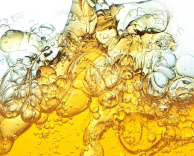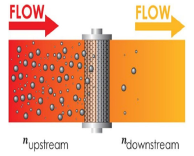Lubricating Oils: Essential Guide to Oil Sampling and Analysis
Introduction:
Lubricating oils are essential for the smooth operation of mechanical systems, acting as a protective barrier that reduces friction, heat, and wear between moving parts. This article delves into the critical aspects of oil sampling and analysis, emphasizing the significance of proper techniques to ensure accurate assessments of machine health.
The Role of Lubricating Oils
Lubricating oils, often referred to as the "blood" of machines, serve multiple critical functions that ensure optimal performance and longevity of machinery. These key roles include:
1.Control Friction:Lubricating oils form a protective film between moving parts, significantly reducing friction. This friction reduction not only enhances efficiency but also extends the lifespan of mechanical components by minimizing wear and tear.
2.Control Wear: By minimizing friction, lubricants reduce the wear on parts caused by direct contact, which is crucial for maintaining the integrity and function of machinery over time.
3.Control Corrosion: Lubricating oils help protect metal surfaces from corrosion caused by moisture, contaminants, and chemicals. This corrosion prevention is vital for maintaining the durability and performance of machinery.
4.Control Temperature: Oils aid in dissipating heat generated by mechanical operations. By maintaining proper operating temperatures, lubricants prevent overheating, which could otherwise lead to system failure or reduced performance.
5. Control Contamination: Lubricating oils help carry away debris, dirt, and other contaminants from the internal components of machinery. This keeps the system clean and ensures smooth, efficient operation.
6.Transmit Power: Oils are essential in systems where they transfer power between components, such as in hydraulic machinery, ensuring efficient energy conversion and operation.
7.Motion Control: Lubricants also serve in controlling the motion of parts, ensuring smooth movement and reducing the risk of jamming or breakdowns, particularly in precision machinery.
The Necessity of Oil Sampling
Regular oil sampling is crucial for effective maintenance strategies. It provides insights into the condition of the lubricant and the machinery it serves. However, improper sampling techniques can lead to misleading results, potentially resulting in premature machinery failure.
Key Considerations for Effective Oil Sampling
1.Turbulence:
- Optimal Sampling Points: Samples should be taken from areas where oil flow is turbulent, such as sharp bends or elbows in piping. These locations tend to carry more contaminants than areas with laminar flow, which may yield deceptively clean samples.
2.Ingress Points:
- Downstream Sampling: It is advisable to collect samples downstream from parts that experience significant wear before the oil returns to the main tank. This ensures that contaminants are not diluted by mixing with cleaner oil upstream.
Filtration Considerations:
- Sampling Upstream of Filters: Always collect samples before the oil passes through filters. Samples taken downstream may appear cleaner due to filtration processes, which can mask true contamination levels.
Methods of Oil Sampling
Several methods are employed for effective oil sampling:
- Pressurized Line Sampling: This method involves taking samples from pressurized lines before they reach filters. It ensures a representative sample reflecting actual operating conditions.
- Drop Tube Method: Used primarily in non-pressurized systems, this technique allows for sampling directly from a sump or reservoir using a drop tube to reach the oil.
- Vacuum Pump Sampling: A vacuum pump can facilitate efficient sampling from various systems without introducing contaminants from external sources.
Understanding Oil Analysis
Once samples are collected, they undergo rigorous analysis to determine their condition. Key components analyzed include:
- Viscosity: Measures the oil's resistance to flow; critical for ensuring proper lubrication under varying temperatures.
- Contaminant Levels: Identifies wear particles and other contaminants that could indicate issues within the machinery.
- Additive Depletion: Assesses whether essential additives in the oil have been used up or degraded over time.
- Moisture Levels: Determines the presence of water in the oil, a significant concern as water can lead to corrosion, reduced lubricity, and the formation of sludge.
- Acid Levels (TAN - Total Acid Number): Measures the acidity of the oil to detect oxidation or contamination that can lead to corrosion and reduced oil life.
Making Informed Decisions Based on Oil Condition
Oil changes should ideally be based on actual oil conditions rather than fixed intervals (time or operating hours). This approach can lead to significant cost savings and improved machinery reliability. An accurate Oil Analysis Report provides vital information for decision-making regarding maintenance schedules and potential repairs.
Types of Contaminants and Their Impact
Understanding common contaminants is crucial for effective maintenance:
- Wear Particles: Generated from normal operation; their presence can indicate component wear.
- Water Contamination: This can lead to emulsification and corrosion if not addressed promptly.
- Fuel Dilution: This may occur in engines and can significantly alter lubricant properties.
FAQs:
Conclusion
The health of machinery heavily relies on effective lubrication management through proper
sampling and analysis techniques. By understanding how to collect representative oil samples and
interpret analysis results accurately, operators can enhance equipment reliability and longevity
while minimizing operational costs.
The #knowyouroil series by MINIMAC SYSTEMS aims to educate users on these critical aspects,
ensuring that they are well-equipped to maintain their machinery effectively.
In summary, lubricating oils play a vital role in machinery performance. Proper sampling
techniques are essential for accurate analysis and informed maintenance decisions, ultimately
leading to reduced downtime and increased efficiency in mechanical operations.
Ensure your machine runs smoothly—get your oil checked today by our expert technician!
Visit our website to book your oil check:[https://www.minimacsystems.com/contact-us]





